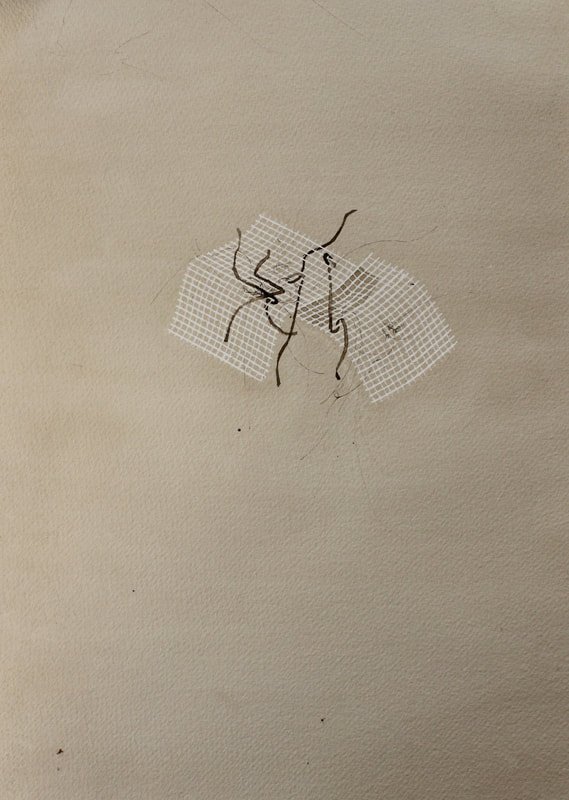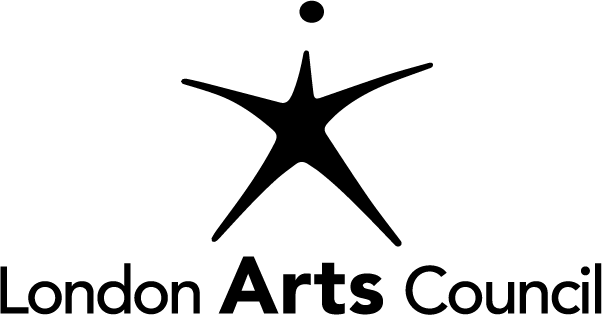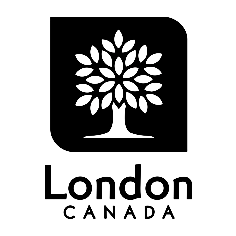untitled, Walnut ink on paper, 10"x 14", 2015
ECH: Tell us a little about yourself.
I was born on a very cold winter’s day in the midst of post-revolution chaos in Iran. I grew up in Shiraz, the city of poetry, it’s called. When I turned twenty, I moved to Canada. I studied Math and statistics in Iran and Fine Arts in Canada.
ECH: Briefly describe your art practice.
I often work with water-based materials such as ink and watercolour. I respond naturally to the easy flow and transparency of these mediums. Paper is not just a surface for my work, sometimes it is the main subject of the work especially when I weave, fold or cut it into pieces. Even though the subject of the work is about something cultural or social, it is never disconnected from my own personal experience.
ECH: What role does your cultural identity play in your work?
The same role it plays in my life. Everything is influenced by it and everything goes through this aspect of my identity. As a young immigrant, for a very short period, I dreamed of a certain freedom, a fate that was not fixed, shall we say. I studied identities and how they can be ever changing. I do still believe in that but not as rigidly as I used to. To grow up in Iran is to be subjected to intense political and socio-cultural pressures. One grows older, of course, in a cragged way that doesn’t help to find a defined and somehow clear identity. Thanks to the path I ended up choosing, practicing art, I think about these things more comprehensively now.
For those interested in the place of children in the post-revolutionary chaos of Iran I recommend Abbas Kiarostami’s 1989 documentary Homework.
There are obvious visual clues and attributes in my drawings that are related to calligraphy, for example. Calligraphy is a big part of my cultural identity. Writing a text in a skilled hand was a discipline that was very important. So we practiced calligraphy all the time and the muscle memory informs my mark-making. Also, through Calligraphy, language arrives in my visual work. Language and the art of poetry is very much part of my cultural identity. Poetry first and a little later I discovered visual arts.
I often use human hair in my work. I find hair a very interesting part of the body. Culturally, hair is a very charged idea because of the compulsory hijab in Iran and also, biologically it has a very wide range of characteristics representing genes in the family, race, age, etc.
ECH: Could you share a little bit about your experience during the pandemic?
A few months into the pandemic, I realized I was in a dark fog that prevented me from continuing in my daily life. Like many others, it gradually affected my sleep, and well being. It wasn’t just the fear and uncertainty brought to us by the pandemic but also the awful news coming in from all over the world and even in my own neighbourhood.
One day, I found myself looking at a tree on the other side of my apartment window and I was overwhelmed by the shape and number of the leaves. I created a discipline for myself and promised to follow it until I was out of the dark cloud. These were the rules: 1. Draw a branch a day 2. Don’t listen to music when drawing 3. Only think about the branch and its leaves when drawing: how it folds and turns, how I am observing the colours and temperature of the weather, as well as temperature of the light and humidity of each leaf, among other things.
I am still drawing the branches, maybe not everyday but consistently. It did, in fact, help me to come out of the fog. This apple tree that I look at everyday, is such a metaphor of life and seems to speak a language of wholeness that I think brought me back to some clarity. I needed proximity, a thorough connection. I am hoping to at least continue to draw one full cycle of the tree, four seasons.
ECH: If any, can you tell us about your connection/experience/history with the Embassy Culture House?
I met Jamelie in 2014 for a studio visit at Western University and shortly after I met Ron at my end of term critique. Immediately, I realized how important they are to the London community. I remember how I felt after the studio visit. It was heart-warming to me that Jamelie was familiar with different cultural identities and that she knew so much about Iran. It was great when someone commented about traces of Arabic calligraphy in my work and then asked if I spoke Arabic and Ron right away commented that I must be a Farsi speaker. I found it refreshing. And now I am so honoured to be a small part of ECH diverse projects.
I was born on a very cold winter’s day in the midst of post-revolution chaos in Iran. I grew up in Shiraz, the city of poetry, it’s called. When I turned twenty, I moved to Canada. I studied Math and statistics in Iran and Fine Arts in Canada.
ECH: Briefly describe your art practice.
I often work with water-based materials such as ink and watercolour. I respond naturally to the easy flow and transparency of these mediums. Paper is not just a surface for my work, sometimes it is the main subject of the work especially when I weave, fold or cut it into pieces. Even though the subject of the work is about something cultural or social, it is never disconnected from my own personal experience.
ECH: What role does your cultural identity play in your work?
The same role it plays in my life. Everything is influenced by it and everything goes through this aspect of my identity. As a young immigrant, for a very short period, I dreamed of a certain freedom, a fate that was not fixed, shall we say. I studied identities and how they can be ever changing. I do still believe in that but not as rigidly as I used to. To grow up in Iran is to be subjected to intense political and socio-cultural pressures. One grows older, of course, in a cragged way that doesn’t help to find a defined and somehow clear identity. Thanks to the path I ended up choosing, practicing art, I think about these things more comprehensively now.
For those interested in the place of children in the post-revolutionary chaos of Iran I recommend Abbas Kiarostami’s 1989 documentary Homework.
There are obvious visual clues and attributes in my drawings that are related to calligraphy, for example. Calligraphy is a big part of my cultural identity. Writing a text in a skilled hand was a discipline that was very important. So we practiced calligraphy all the time and the muscle memory informs my mark-making. Also, through Calligraphy, language arrives in my visual work. Language and the art of poetry is very much part of my cultural identity. Poetry first and a little later I discovered visual arts.
I often use human hair in my work. I find hair a very interesting part of the body. Culturally, hair is a very charged idea because of the compulsory hijab in Iran and also, biologically it has a very wide range of characteristics representing genes in the family, race, age, etc.
ECH: Could you share a little bit about your experience during the pandemic?
A few months into the pandemic, I realized I was in a dark fog that prevented me from continuing in my daily life. Like many others, it gradually affected my sleep, and well being. It wasn’t just the fear and uncertainty brought to us by the pandemic but also the awful news coming in from all over the world and even in my own neighbourhood.
One day, I found myself looking at a tree on the other side of my apartment window and I was overwhelmed by the shape and number of the leaves. I created a discipline for myself and promised to follow it until I was out of the dark cloud. These were the rules: 1. Draw a branch a day 2. Don’t listen to music when drawing 3. Only think about the branch and its leaves when drawing: how it folds and turns, how I am observing the colours and temperature of the weather, as well as temperature of the light and humidity of each leaf, among other things.
I am still drawing the branches, maybe not everyday but consistently. It did, in fact, help me to come out of the fog. This apple tree that I look at everyday, is such a metaphor of life and seems to speak a language of wholeness that I think brought me back to some clarity. I needed proximity, a thorough connection. I am hoping to at least continue to draw one full cycle of the tree, four seasons.
ECH: If any, can you tell us about your connection/experience/history with the Embassy Culture House?
I met Jamelie in 2014 for a studio visit at Western University and shortly after I met Ron at my end of term critique. Immediately, I realized how important they are to the London community. I remember how I felt after the studio visit. It was heart-warming to me that Jamelie was familiar with different cultural identities and that she knew so much about Iran. It was great when someone commented about traces of Arabic calligraphy in my work and then asked if I spoke Arabic and Ron right away commented that I must be a Farsi speaker. I found it refreshing. And now I am so honoured to be a small part of ECH diverse projects.



















